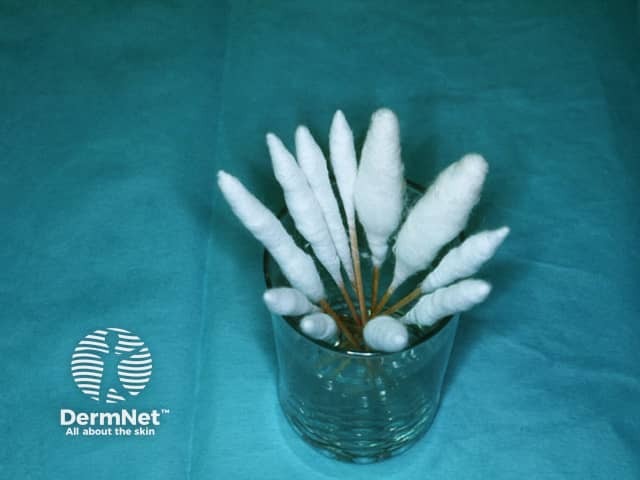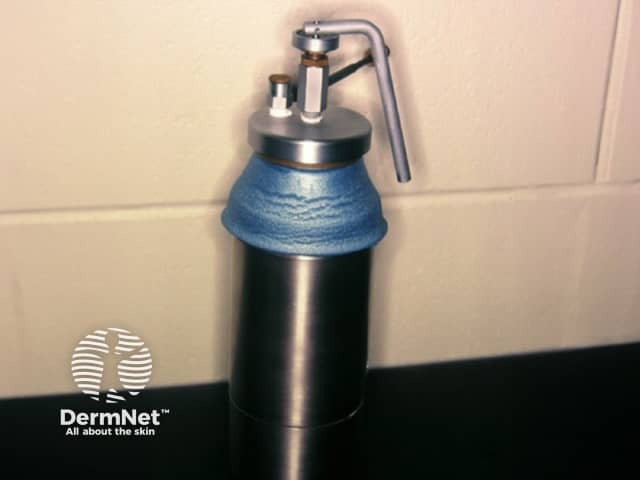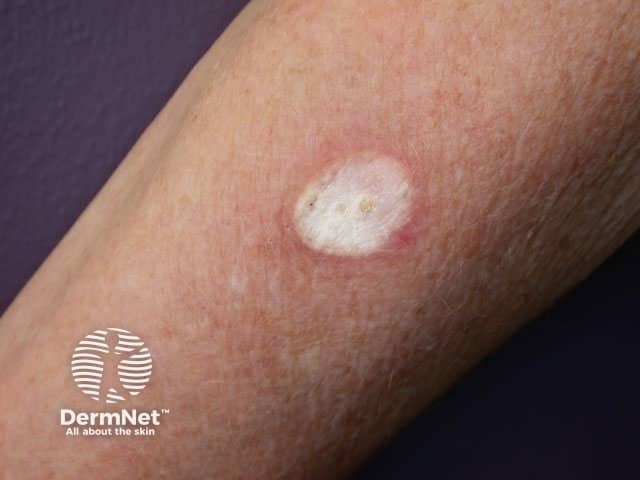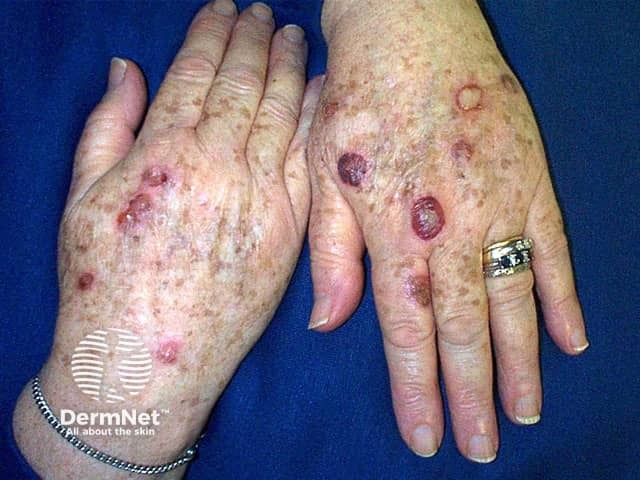Main menu
Common skin conditions

NEWS
Join DermNet PRO
Read more
Quick links
Author: Procare Guidelines Group; Chief Editor: Dr Amanda Oakley, Dermatologist, Hamilton, New Zealand, 3 August 2014.
Definition
Scope
Indications
Contraindications
Precautions
Checklist
Post-procedure
Complications and side-effects
Safety considerations
Relevant practice policies and procedures
These guidelines have been written for the use of ProCare member practices. No set of guidelines can cover all variations required for specific patient circumstances. It is the responsibility of the health care practitioners using these guidelines to adapt them for safe use within their institutions and for the individual needs of patients.
Cryotherapy is a minimally invasive procedure that uses an extremely cold liquid or instrument to freeze and destroy abnormal tissue that requires elimination. It is also referred to as cryosurgery or cryoablation.
Medical practitioners and registered nurses who have been are trained to perform the procedure.
Treatment of malignant skin lesions by cryotherapy is not covered by this document.
*Diathermy may be more effective for acrochordons / fibroepithelial polyps
The following skin cancers may be suitable for cryotherapy if performed by a medical practitioner with appropriate training and where the lesion has been identified by biopsy:

Large cotton swabs used for cryotherapy

Cryotherapy liquid nitrogen dispenser
Inform patient that the treated area:
If there are any signs of infection the patient should contact the practice**
**For example, increasing redness of surrounding skin, discharge, increasing pain

Frozen skin

Blistering one day post liquid nitrogen application